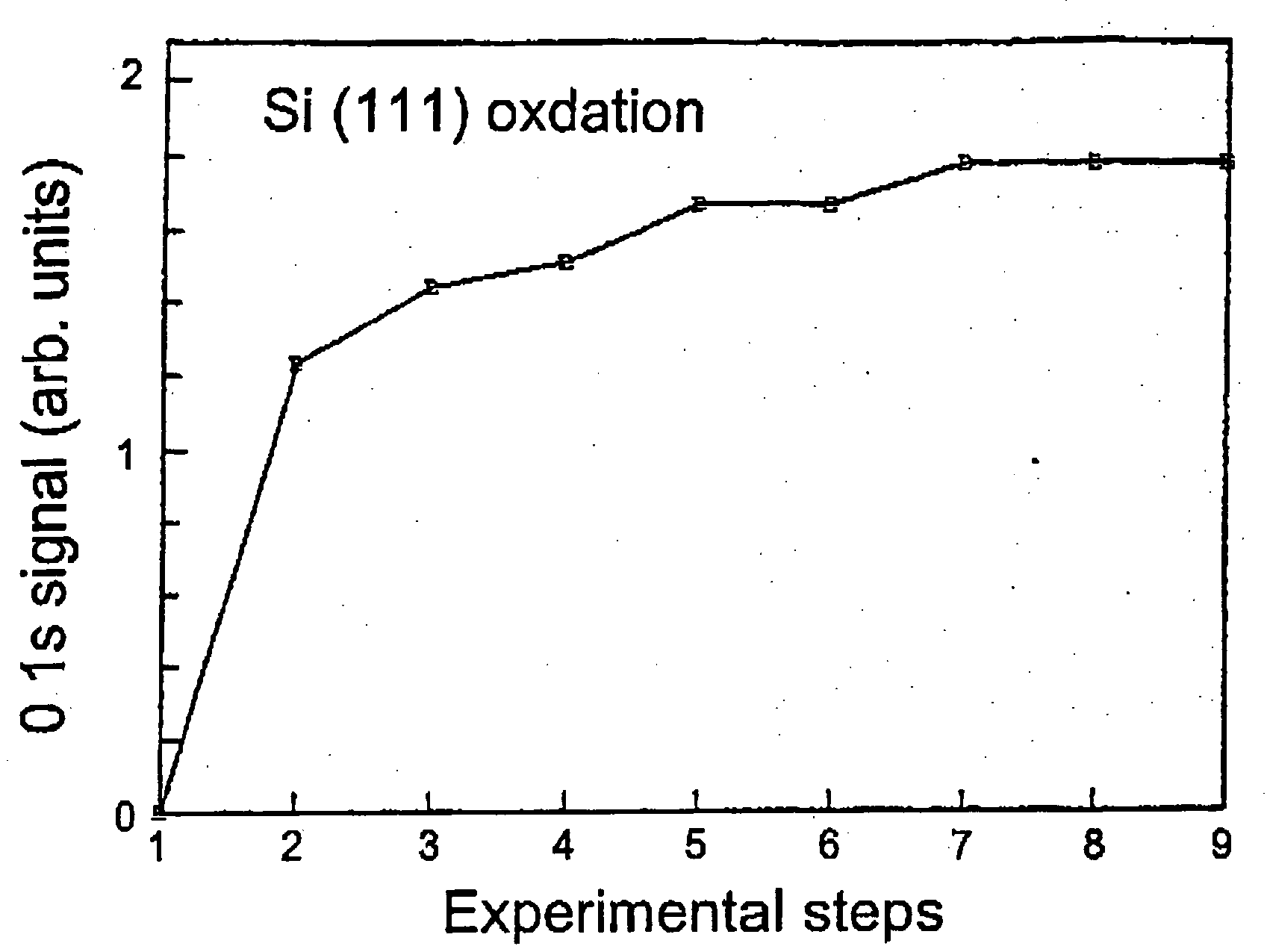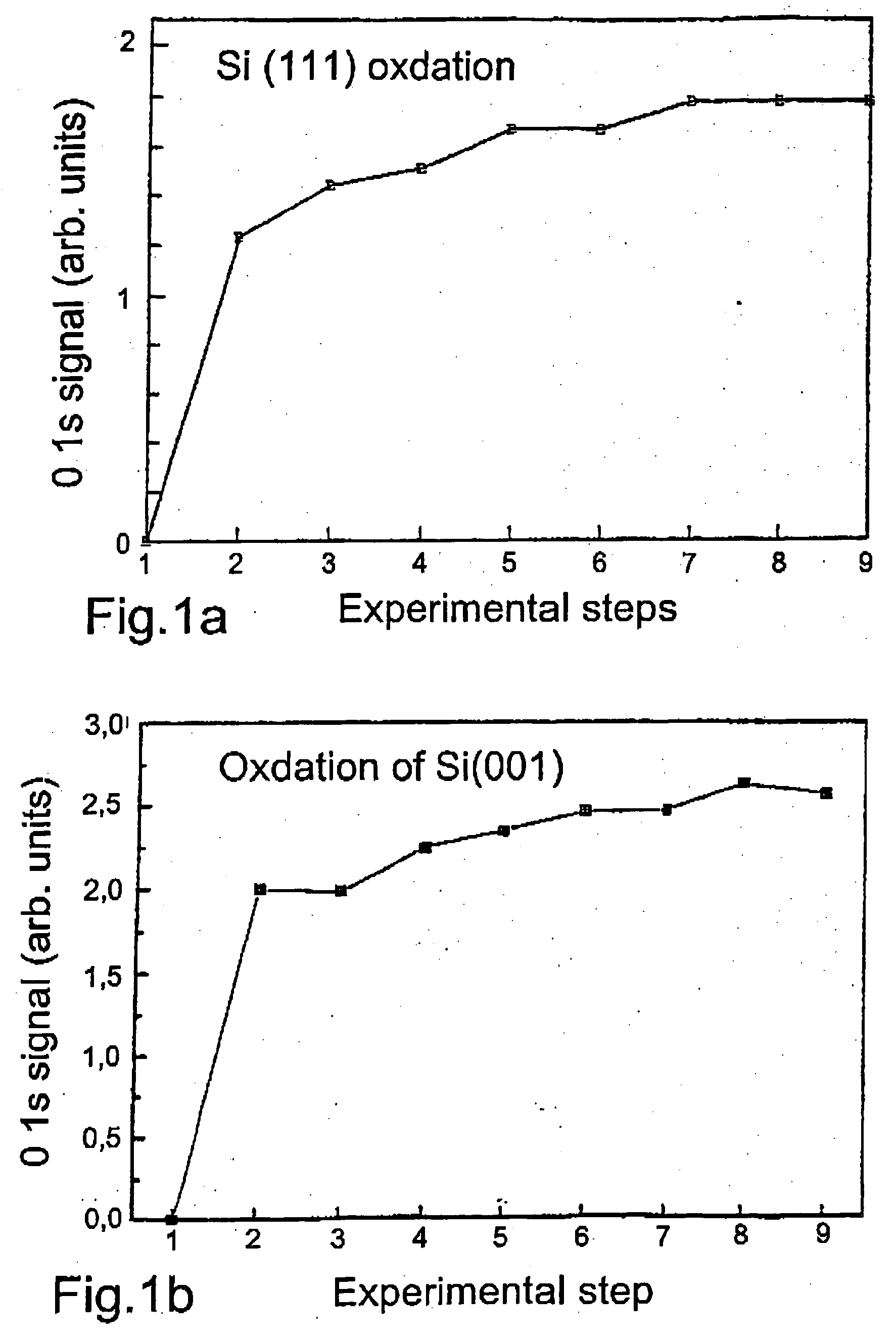Method for oxidation of silicon substrate
a technology of silicon substrate and oxidation method, which is applied in the direction of semiconductor/solid-state device manufacturing, basic electric elements, electric devices, etc., can solve the problems of limited ultrathin oxide regime, difficult control of method, and difficult control of method scale, etc., and achieve high precision
- Summary
- Abstract
- Description
- Claims
- Application Information
AI Technical Summary
Benefits of technology
Problems solved by technology
Method used
Image
Examples
Embodiment Construction
[0037] In the following, a number of experiments will be described, which have been performed in order to demonstrate the growth of oxide layers on silicon in a controlled way with a specified thickness.
[0038] For preparation of the substrate, a standard procedure was used as a cleaning process of polished single crystal silicon wafers, which in the experiments were of n-type with a resistivity of 5 ohm-cm and oriented in (111) or (001) directions. However, crystals with other resistivities and orientations can be used as well.
[0039] The substrates were flash heated to 1000.degree. C. a number of times, after which the surfaces were clean and reconstructed in the known structures as could be monitored with LEED (Low Energy Electron Diffraction), Photoemission, and Optical Second Harmonic Generation Spectroscopy.
Creation of One Monolayer of Oxide (or Oxide-like Substance) (First Recipe)
[0040] In order to produce a silicon oxide layer on the silicon substrate, where the oxide layer ha...
PUM
 Login to View More
Login to View More Abstract
Description
Claims
Application Information
 Login to View More
Login to View More - R&D
- Intellectual Property
- Life Sciences
- Materials
- Tech Scout
- Unparalleled Data Quality
- Higher Quality Content
- 60% Fewer Hallucinations
Browse by: Latest US Patents, China's latest patents, Technical Efficacy Thesaurus, Application Domain, Technology Topic, Popular Technical Reports.
© 2025 PatSnap. All rights reserved.Legal|Privacy policy|Modern Slavery Act Transparency Statement|Sitemap|About US| Contact US: help@patsnap.com



